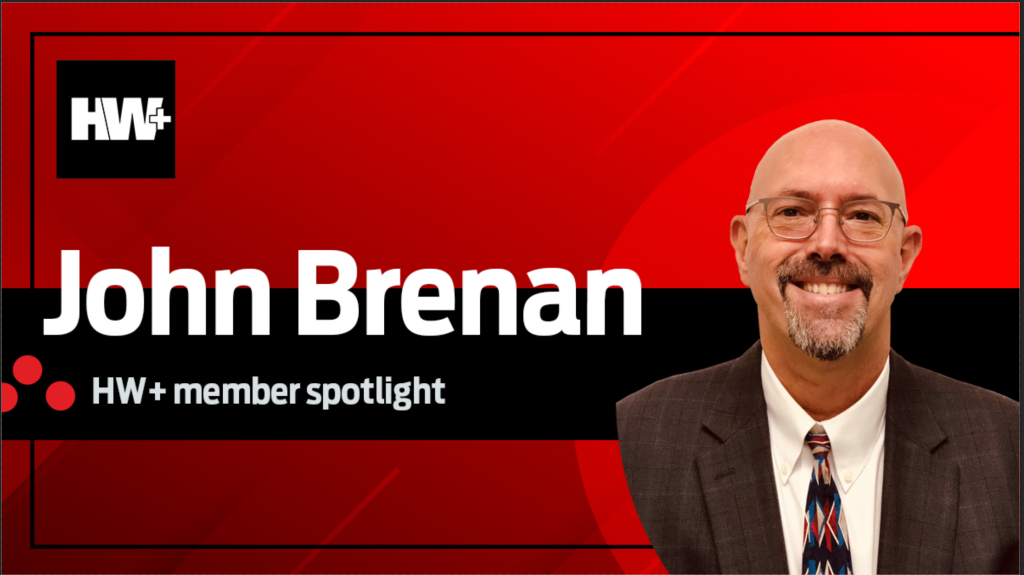
This week’s HW+ member spotlight features John Brenan, vice president of Valuation Policy and chief appraiser at Clear Capital. Brenan has more than four decades of experience in the appraisal industry, previously serving in leadership roles at The Appraisal Foundation and the State of California Bureau of Real Estate Appraisers. At Clear Capital, Brenan oversees the quality of the company’s appraisal and valuation products and implements changes to continually evolve the program.
Below, Brenan answers questions about the housing industry:
HousingWire: To start off, what is your current favorite HW+ article?
John Brenan: “Recruiting the next generation of appraisers” by Stacy Marshall. I’ve listed this as my favorite because it’s something I’m passionate about and feel it’s essential in order for appraisers to remain relevant.
Appraiser capacity remains a significant concern, and the lack of diversity in the appraisal profession is a problem that has been overlooked for far too long. Without significant improvement in attracting more people (with a focus on diversity) to pursue a career as an appraiser in a relatively short period of time, I believe the profession will suffer irreparable harm.
HousingWire: If you had chosen a different career path, what would it be?
John Brenan: I would be a mechanical engineer. I’ve always been mechanically inclined and developed a love for cars at an early age, based on the four drag race cars my father owned. The sights, sounds and smells of quarter-mile drag racing were something to behold for a pre-teen boy living in the suburbs of Los Angeles, and getting to be “part” of the pit crew really brought out my love of all things mechanical. If only I’d been able to master the slide rule!
HousingWire: When do you feel like a success at your job?
John Brenan: When I can help empower others to accomplish new things. Early in my career, I would tend to take matters into my own hands when something needed to be done because I felt I could simply get it done more effectively than trying to teach someone else how to do it.
I felt good about this approach because I thought it was the shorter path to the desired result. But as I progressed in management roles, I found it far more rewarding to help others “find a key” to unlock their previously unused skills and abilities. I initially appreciated this simply because I found it rewarding to help others, but I soon realized building a strong team around me allowed me to be far more effective as well.
HousingWire: What keeps you up at night and why?
John Brenan: I feel like the lack of diversity in the appraisal profession is one of the things I find most concerning. To some degree, appraiser capacity issues can be mitigated by modern appraisal products like desktop and hybrid appraisals. However, the lack of women and people of color in the appraisal profession is not only personally troubling, but I believe it puts all appraisers at risk.
For example, how can a person of color receive an appraisal on their home that they deem to be unfair, see that 96.5% of appraisers are white (according to the Bureau of Labor Statistics), and feel like they are being given a fair shake? How can there be public trust in a profession that doesn’t look like the general population it serves?
I don’t believe the appraisal profession is filled with racist practitioners; not at all. However, as someone in the valuation industry for the last 40 years, I never imagined the President of the United States publicly expressing concerns about potentially biased appraisals. The creation of the PAVE Task Force and the imminent publication of its findings may very well create shockwaves in the entire lending arena. It’s my hope that appraisers can be part of the solutions.
HousingWire: What’s one thing that people aren’t paying attention to that you think they should be paying attention to?
John Brenan: The Practical Applications of Real Estate Appraisal (PAREA), a recently-approved alternative path to satisfy the experience requirements to obtain an appraiser license. Since the 1930s, appraisers have largely been trained the same way — the supervisor/trainee mentorship model.
This model was effective for many years because financial institutions, which typically had a large appraisal staff, would train new appraisers. However, as the independent fee appraiser model became the norm, the burden of training new appraisers fell squarely on the shoulders of the individual appraiser, many of whom soon asked, “What’s my incentive for training someone to compete with me for appraisal work?”
Needless to say, the number of new appraisers coming into the business started to decline significantly. On January 1, 2021, PAREA became approved as an alternative way of gaining experience. In short, PAREA uses state-of-the-art technology to offer simulated training for appraisers, much like airline pilots, surgeons, firefighters and many other professions.
Benefits of PAREA include:
- New appraisers being brought in at scale, because PAREA is self-paced and there is no limitation on the number of participants that can be trained at one time.
A concentrated focus on women and people of color can make a positive impact on appraiser diversity at a greatly accelerated pace versus the supervisor/trainee model.
Using today’s technology, new appraisers can be trained on a wide variety of property types and market conditions that may not have ever occurred under the supervisor/trainee model. So if you haven’t heard about PAREA, you better ask somebody!
To become an HW+ member, click here.
For more information on HW+ benefits, click here.





